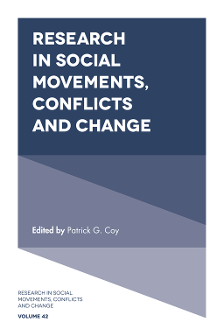
Index
Research in Social Movements, Conflicts and Change
ISBN: 978-1-78756-896-9, eISBN: 978-1-78756-895-2
ISSN: 0163-786X
Publication date: 16 October 2018
Citation
(2018), "Index", Research in Social Movements, Conflicts and Change (Research in Social Movements, Conflicts and Change, Vol. 42), Emerald Publishing Limited, Leeds, pp. 243-248. https://doi.org/10.1108/S0163-786X20180000042011
Publisher
:Emerald Publishing Limited
Copyright © 2018 Emerald Publishing Limited
INDEX
- Prelims
- Introduction
- Section I Social Movements and Their Institutional Relations
- Allies in Action: Institutional Actors and Grassroots Environmental Activism in China
- A Tale of Two Bike Lanes: Consensus Movements and Infrastructure Delivery
- When Do Political Parties Move to the Streets? Party Protest in Chile
- Building Solidarity across Asymmetrical Risks: Israeli and Palestinian Peace Activists
- Section II Frames and Discourses in Conflicts and Social Movements
- Frame Resonance, Tactical Innovation, and Poor People in the Tunisian Uprising
- Black Lives Matter: (Re)Framing the Next Wave of Black Liberation
- Challenging Everyday Violence of the State: Developing Sustained Opposition Movements through Anti-corruption Protests
- Section III Activist Start-Up and Withdrawal
- Volunteer Retention, Burnout and Dropout in Online Voluntary Organizations: Stress, Conflict and Retirement of Wikipedians
- Late Bloomers: Differential Participation among First-time, Mid-Life Protesters
- Index